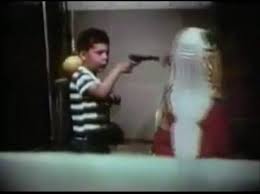Aggressive behavior in children can be prevented

Before you read, what do you think
Does exposure to violence affect children growing up
Sudying aggression in children - the 'Bobo doll studies'
During the 1960’s Albert Bandura and colleagues conducted a social learning experiment on 96 children (boys and girls) between the ages of 35 and 69 months of age. The objective of this study was to gauge at what extent children would imitate the aggressive behaviour of a person in comparison to watching aggressive behaviour on a film. This experiment became widely known among psychologists and civilians alike as the ‘Bobo doll studies’. Bandura conducted several experiments, each involving the children watching a ‘model’ (a person or a film) acting aggressively towards an inflated five-foot toy known as a Bobo doll.
Albert Bandura was born in Alberta, Canada in 1925. He first studied psychology at the university of British Columbia as an undergraduate and then moved on to the university of Iowa as a postgraduate. His first academic post was at Stanford university which is where he remained for all of his working life and where the ‘Bobo doll studies’ were conducted. Bandura lived through the introduction of the television in the UK and as a psychologist became aware of what the effects of exposure to violence in the media may have on children.
Bandura’s research on this topic was a very sophisticated and in depth study, leaving no stone unturned in terms of studying every aspect of the children’s imitative behaviour. Bandura made every effort to ensure that the children would experience exactly the same set of events, in the same rooms and with the same toys. This was essential because if there were any differences in setting then it would be impossible to say whether or not the children reacted differently because of those changes to their environment instead of the changes to the way they observed the ‘Model’. Remember that the model is the key element to this study is the only variable that may be changed, how they are observed by the children.
The children were split into 4 groups of 24, each group found themselves in the exact same environment would observe the ‘model’ in different ways. Each group’s model was as follows:
- Group 1 observed a live model acting aggressively towards the Bobo doll.
- Group 2 observed a film of the live model behaving aggressively towards the Bobo doll.
- Group 3 observed a film of a ‘fantasy’ model behaving aggressively towards the Bobo doll.
- Group 4 did not observe any aggressive behaviour towards the Bobo doll.
The Results of the experiment
What Bandura and his research colleagues found is that there was a definite increase in aggressive behaviour when the children in groups 1 – 3 observed a model acting aggressively towards the Bobo doll. It is perhaps shocking that whether the model was watched live or on film made no difference to the amount of aggression that was seen to be imitated.
It was also found that in all groups, including group 4 in which no aggression was portrayed, the boys showed higher aggression scores than the girls.
There researchers found that the gender of the person playing the model also made a difference to the levels of aggression observed, although more so among boys. A higher level of aggression was observed among boys who saw the male model compared to those who saw the female model. Among girls, the effect of the gender of the model was much less pronounced.
Results of Albert Bandura's experiments
Experimental conditions
| Girls - Female model
| Boys - Female model
| Girls - Male model
| Boys - Male model
|
|---|---|---|---|---|
Real-life model (group 1)
| 19.2
| 18.4
| 9.2
| 38.4
|
Human-film model (group 2)
| 10
| 20.0
| 8.0
| 13.3
|
Cartoon-film model (group 3)
| 7.8
| 16.2
| 7.8
| 16.2
|
Control condition (group 4)
| 1.8
| 3.9
| 1.8
| 3.9
|
Interpreting the table above
Girls
Real-life model – When the girls observed a female model the number of aggressive acts where scored at 19.2, when the girls observed a male model they scored 9.2 (a difference of 10 for the girls when observing the same gender as themselves).
Human-film model – When observing a female model on the pre recorded film they scored an aggression score of 10.0 and when observing a male model they scored 8.0 (again higher when observing the same gender but the difference is much lower).
Cartoon-film model – The girls scored a 7.8 aggression level for this.
Control condition – In the no aggression group the girls scored a 1.8
Boys
Real-life model – When the boys observed a female model they scored 18.4, however, when observing a male model they scored a 38.4 (a difference of 20 when observing same gender for boys).
Human-film model – The boys scored 20 when observing a female model on film but only scored a 13.3 when observing the male counterpart
Cartoon-film model – The boys scored a 16.2 for this.
Control condition – A score of 3.9 was reached for the group that was not exposed to any violence.

How can Passive aggressive behavior in children be prevented
Sigmund Freud, the founder of psychoanalysis, came to the conclusion that most of what defines us as human beings is our relationship with our parents and the upbringing that we received at a young age. This notion has been accepted by most modern psychologists and has been studied rigorously since the death of Freud.
Children are the most trusting people we know. They will hang of every single word that their parents tell them, this is why it is so important for parents to be a good example to their child. If a child is allowed to be exposed to watch or play violent things, and the parents allow it, regardless of whether they are approving or not, then they will think that watching such things is normal and even a good thing. Generally this neglecting of the child's entertainment sources leads to more aggressive behavior in the future such as gun play, verbally offensive language and physical aggression towards others.
The research conducted by Albert Bandura gives us a great insight into the complex mind of children and reveals to us just how important learned behavior is, especially to children of a young age. The results of the experiments show that children will imitate aggression from either a person or a television with similar effectiveness.
With this revelation, parents can understand that the amount of aggression shown to their children makes it likely that they will mimic that behavior. While there is no evidence of long term damage to the children that took part in the experiments, we do know that one of the reasons that Albert Bandura decided to stop his experiments was that he was worried about the potential long term damage that he could be inflicting on the children. Albert Bandura’s research should now be of great importance to parents today, the majority of our children these days have access to a wide range of computer games, television programs and the internet making it very easy for them to be exposed to violent behavior.








